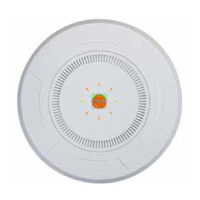Wireless Access Point
2 Introduction
Xirrus Management System (XMS)
XMS is used for managing large wireless deployments from a centralized
Web-based interface. Xirrus offers XMS-Cloud—a software as a service
option for XMS, providing zero-touch provisioning and initial startup for
new AP deployments. XMS is capable of managing large numbers of APs,
including automated software and firmware upgrades for the network.
Another option is XMS, hosted on your own server. It manages all aspects
of your Xirrus wireless network. For customers using the XMS-9000-CL-x
Cloud-hosted version, all AP management is performed via the cloud.
For detailed information, refer to the XMS User’s Guide.
Xirrus-supplied Power over Ethernet (POE) Injectors and POE+
Switches
Xirrus offers 24- and 48-port enterprise-class L2+ gigabit managed access
switches with IEEE802.3at PoE+, four 1G/10G SFP+ ports, and stacking.
One-, two-, and eight-port POE injectors are also available for a range of
AP power requirements.
Nomenclature
Throughout this User’s Guide, Xirrus Wireless Access Points are referred to as
simply APs or APs. In some instances, the terms product and unit are also used.
When discussing specific products from the Xirrus family, the product name is
used (for example, XR-4830). The Wireless AP’s operating system is referred to as
the ArrayOS (AOS). The Web Management Interface for browser-based
management of the AP is referred to as WMI.
APs have very flexible radio capabilities — each of the radios may be
independently configured to support IEEE802.11a, 11b, 11g, or 11n clients or a
combination of client types. On APs featuring 802.11ac, this option is also
included. One radio may be assigned as the RF monitor radio, supporting
intrusion detection and prevention, self-monitoring, and other services. Radios
support both 2.4GHz and 5 GHz, and are named iap1, iap2, ... iapn.
The Xirrus Management System is referred to as XMS. The Power over Ethernet
system may be referred to as POE.

